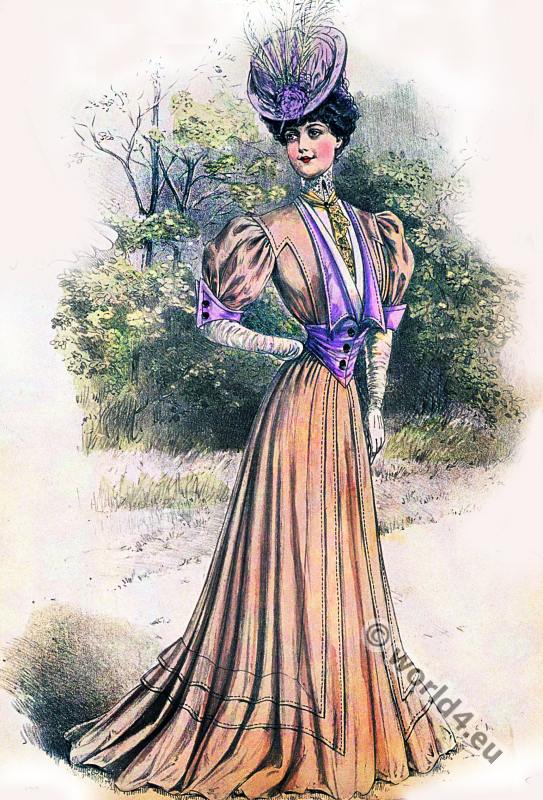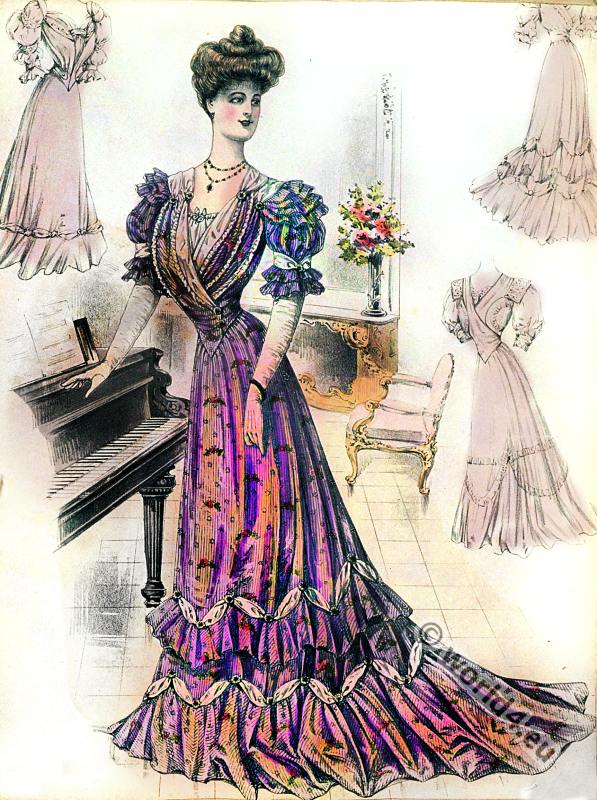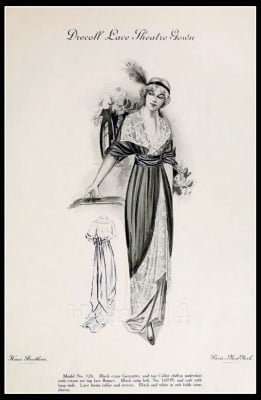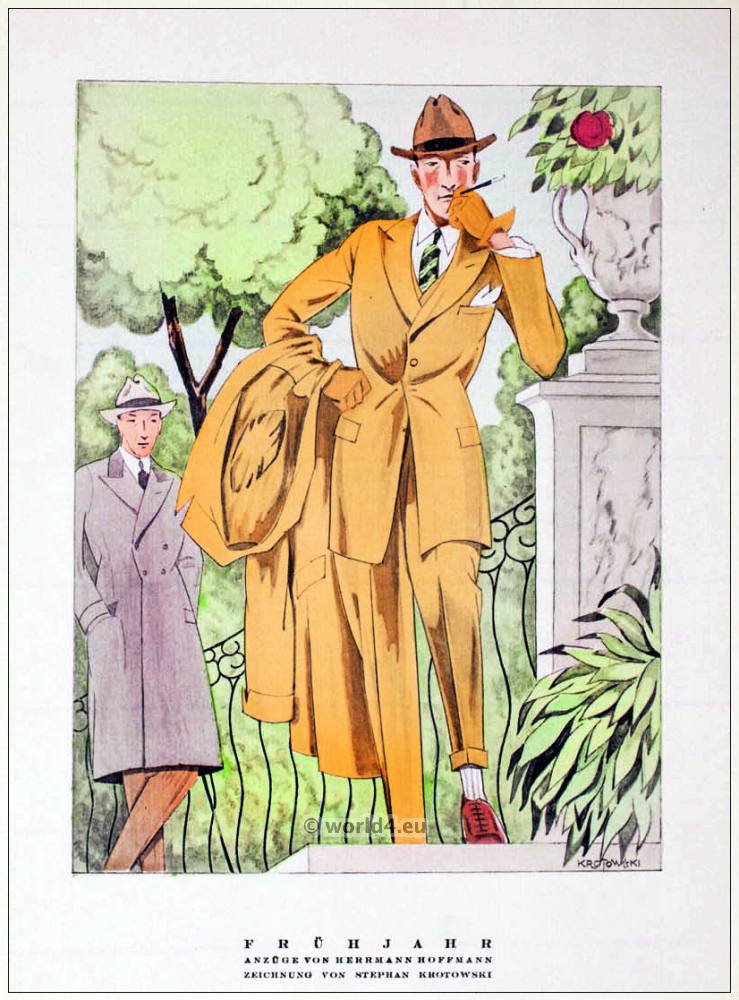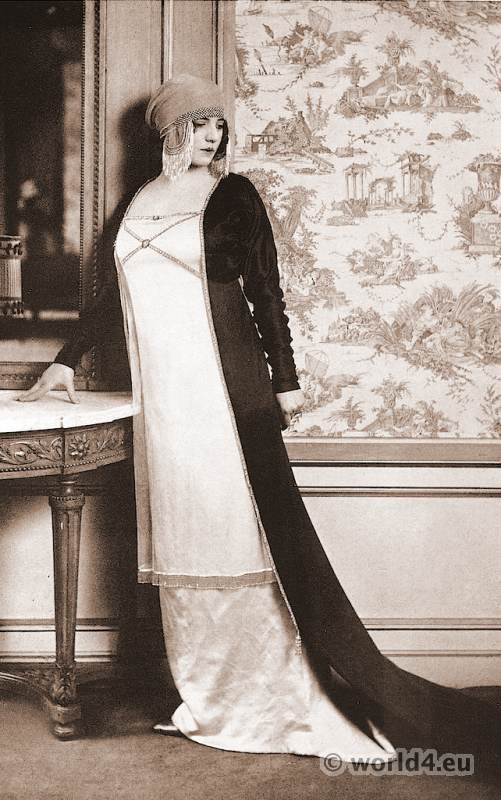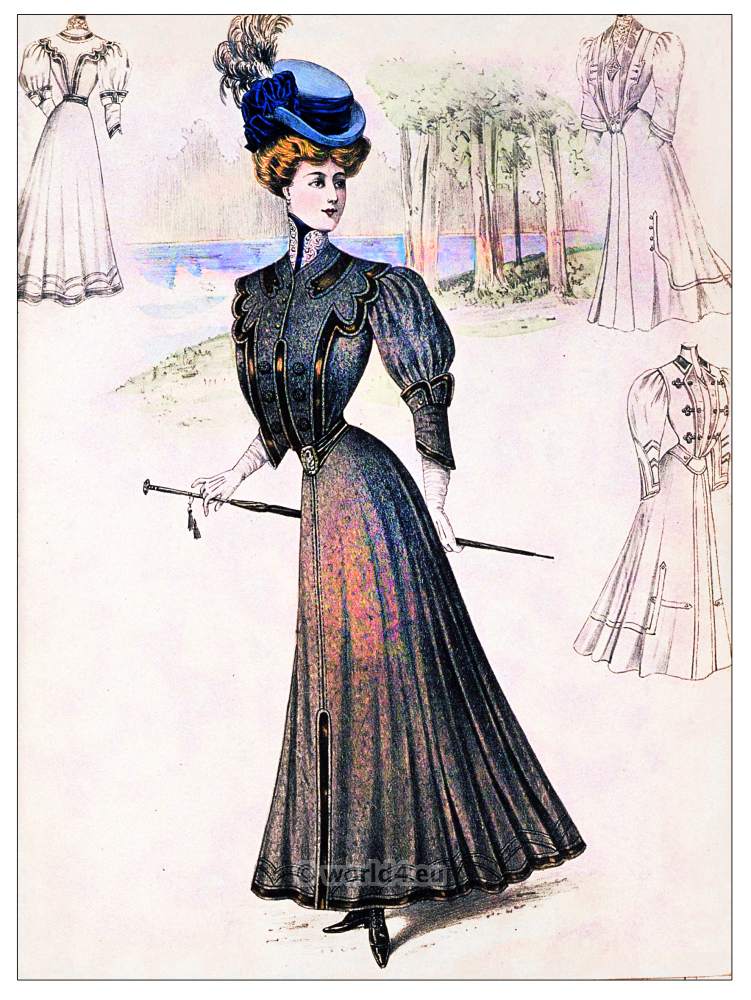Society and Spring toilet in 1906.
Spring toilet of houndstooth Batiste voile. Corsage opening into Jack corners, bordered by aperture taffeta and lace jabot together in a kicking, plastron with embroidery. Stocking of little buttons with eyelets. High silk belt. Ball sleeves with embroidery tulip and iris border, finally in a lacy frill. Skirt with wide stripes embroidery, bounded by taffeta dazzle.
Spring toilet from pastel cloth. Corsage, opening in deep lapels, oblique closing vest with pointed collar and jabot. The body folds easily in the high, curly corset belt with button trim. Puff sleeves with cuff. Rich skirt is double aperture attachment, an overdress marking.
Society toilet of fantasy taffeta. The corsage, obliquely opening in the reverse of bright silk, silk shawl trimmed with small ruffles like. Shoulder ruffles covered, which end with rosettes. Side waist closing with rosettes. Small gauze chemise. Puff sleeves with flounce approaches. Easy Enqueued skirt with two ruffles, above conclusively by band clasps and rosettes.
Source: Le costume moderne. Journal illustré de modes. Specialist journal for the entire women’s costume compartment. Published by C. Heinemann, Berlin 1906.
Related:
- Le style parisien. Les elegances parisiennes 1915. by Lucien Vogel. (Art Nouveau. Fin de siècle, Belle Époque era.)
- France. Haute couture spring season, 1913. (Fin de siècle era.)
- Les Robes de Paul Poiret racontée par Paul Iribe, Paris 1908.
- Paris Fashion Designers in 1916.
- Dolls for the showcase by Lotte Pritzel. 1911.
- Les Chapeaux du Très Parisien Vol. 1., by G.P. Joumard. First edition 1921. (Flapper, Gatsby, Art deco era.)
- Les Chapeaux du Très Parisien Vol. 2,.G.P. Joumard. Second edition 1922.
- Les créations parisiennes. La mode est un art. Published 1929. (Flapper, Gatsby, Art deco era.)
- STYL 1922-1924. German Fashion Magazine. (Berlin Roaring twenties. Flappers, Art deco era.)
- The Incroyables and Muscadins. The French directory dandies.
- Les Incroyables et Merveilleuses. French directoire fashion era.
- The days of the Directoire by Alfred Allinson.
- The Gallery of Fashion by Nikolaus von Heideloff. Regency, Empire, Neoclassical.
- Nymphs and Merveilleuses. Directoire, Neoclassical, Regency, Empire by Octave Uzanne.
- Reign of Napoleon I. 1804 to 1814. French First Empire fashion. (England Regency, Georgian fashion period)
- Reigns of Louis XVIII. and Charles X. 1815 to 1830. The Restoration period, Romantic era, German Biedermeier.
- Romantic fashion in the Reign of Philippe. 1830 to 1848. Victorian era. Crinoline.
- Fashion and costume in the eighteenth century
Discover more from World4 Costume Culture History
Subscribe to get the latest posts sent to your email.


